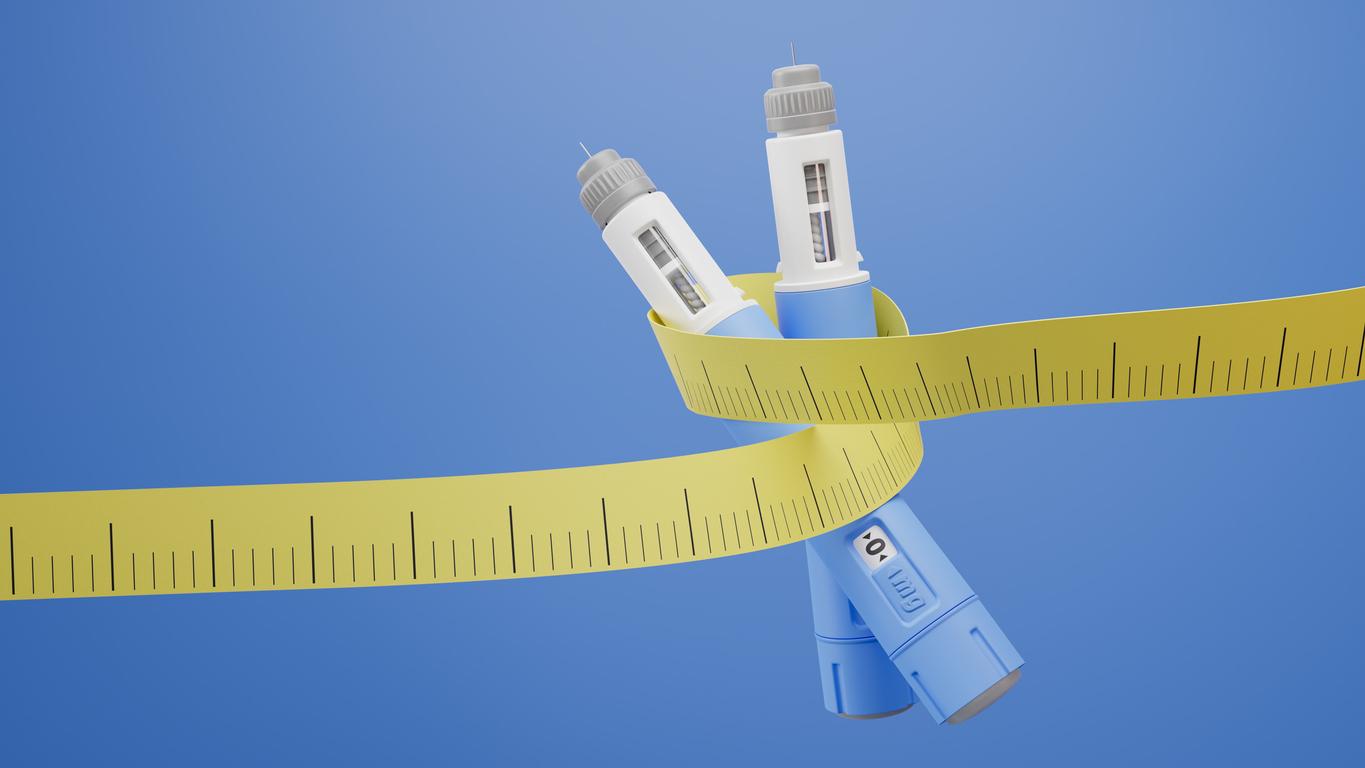Researchers have identified a potential link between semaglutide, a drug prescribed for type 2 diabetes and obesity, and a rare eye disease that causes blindness in one eye.

- A new study reveals for the first time that patients prescribed these treatments may be at increased risk of developing a rare eye condition, non-arteritic anterior ischemic optic neuropathy (NAION).
- A new study reveals for the first time that patients prescribed these treatments may be at increased risk of developing a rare eye condition, non-arteritic anterior ischemic optic neuropathy (NAION).
- Diabetic patients prescribed semaglutide were “more than four times more likely” to be affected by NAION. Overweight or obese people taking these drugs, for their part, were “seven times more at risk”.
- The study does not, however, prove “a causal link”, as the number of NAION cases observed during the six-year follow-up period was “relatively low”.
Semaglutide, marketed as Ozempic or Wegovy, is a drug commonly used to treat type 2 diabetes or promote weight loss by reducing appetite. But is it really safe?
A new study, published in the journal JAMA Ophthalmologyreveals for the first time that patients prescribed these treatments may have an increased risk of developing a rare eye condition, non-arteritic anterior ischemic optic neuropathy (NAION).
Semaglutide may increase risk of blindness in one eye due to rare disease
NAION is a condition that affects up to ten people in 100,000 in the general population. Caused by reduced blood flow to the optic nerve, which connects the eye to the brain, it causes sudden and permanent blindness in one eye. A condition “painless”according to a communicatedbut for which there is currently no treatment or cure.
The researchers behind the study, residents of the Massachusetts Eye and Ear Hospital and Harvard Medical School in the United States, decided to conduct the survey in late summer 2023, after noticing “a worrying trend”. Within just one week, three of their patients had been diagnosed with vision loss attributed to NAION while taking the weight-loss drugs in question.
Given the rarity of the pathology, they decided to retroactively examine the medical records of more than 17,000 diabetic patients, overweight or obese, and treated for six years with Ozempic or Wegovy – the use of which “exploded in industrialized countries” in recent years. They then compared them with data from patients who were using other drugs for type 2 diabetes or to help with weight loss.
As a result, it appeared that diabetic patients who were prescribed semaglutide were “more than four times more likely” to be affected by NAION. Overweight or obese people taking these drugs, for their part, were “seven times more at risk.”

No causal link demonstrated between semaglutide and NAION
It should be noted, however, that the study “does not prove a causal link”the number of NAION cases observed during the six-year follow-up period being “relatively weak”. “With a small number of cases, statistics can change quickly”underlines neuro-ophthalmologist Joseph Rizzo, principal author of the work.
“Our findings should be considered significant but tentative, as further studies are needed to examine them in a much larger and more diverse population. But this is information we did not have before and should be part of discussions between patients and their doctors, particularly if patients have other known optic nerve problems such as glaucoma or if there is pre-existing visual loss.”

















